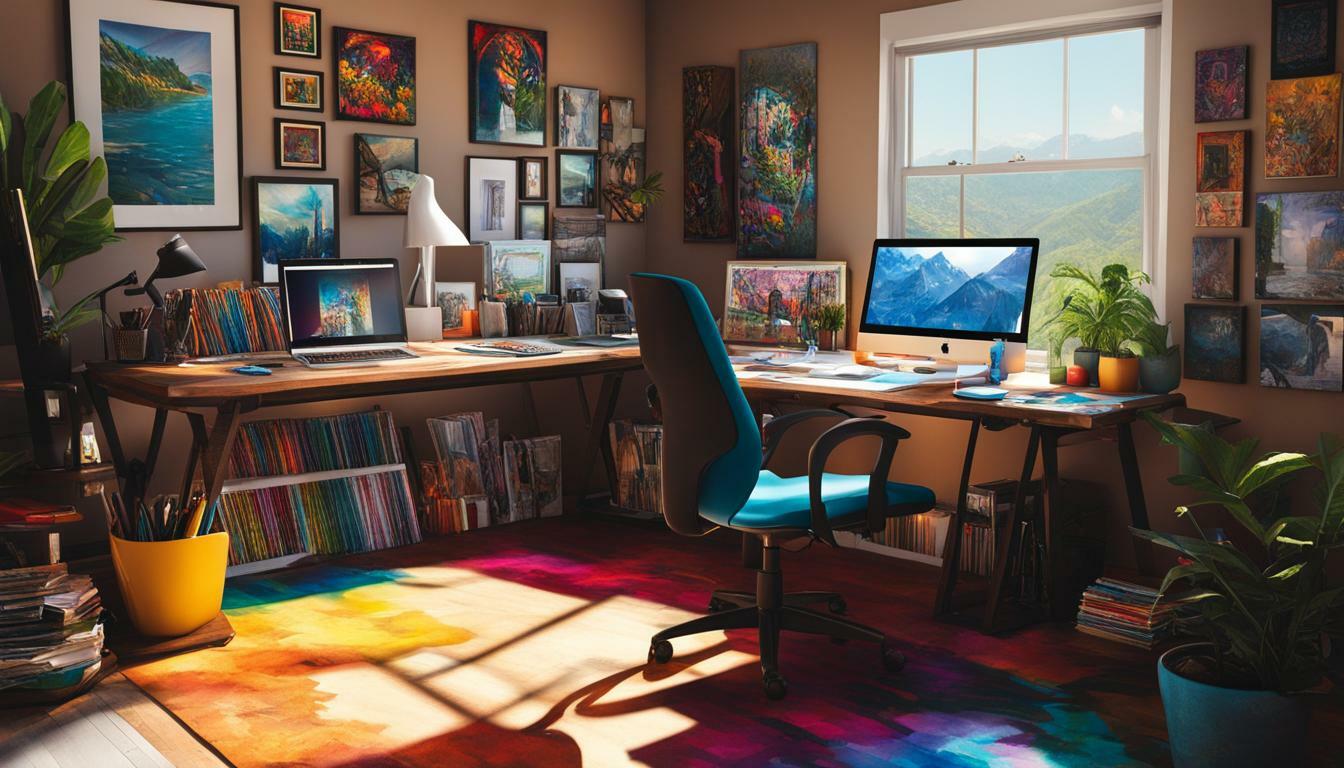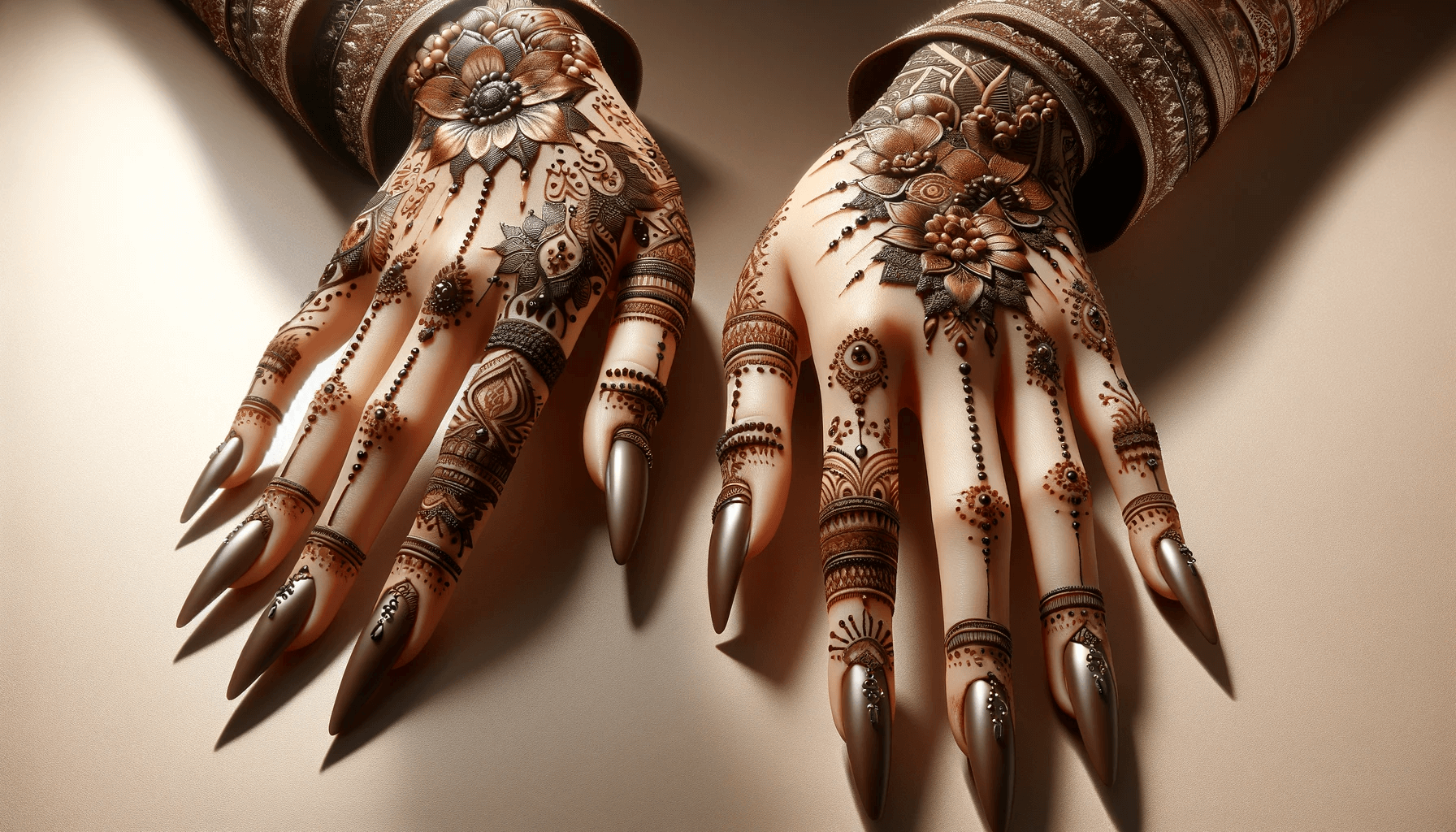Welcome, you talented computer graphic designer! Whether you specialize in graphic design, digital design, web design, animation or illustration, you are in the right place. In this section, we will provide you with the essential tools and valuable tips to help you excel in your creative field as a computer graphic designer.
At the heart of any successful designer is a deep understanding of the fundamentals of graphic design. From visual communication to branding, these principles are the foundation of computer graphic design. In addition, we will delve into the latest trends and software to help you stay ahead of the game.
So, let’s get started on your journey to graphic design success!
Key Takeaways:
- Computer graphic design encompasses a variety of mediums, including graphic design, digital design, web design, animation, and illustration.
- Understanding the fundamental principles of graphic design is crucial to success as a computer graphic designer.
- Keeping up with industry trends and mastering the latest software and techniques is essential for staying competitive in the field.
Mastering Graphic Design: The Foundation of Computer Graphic Design
Congratulations on embarking on your journey to becoming a computer graphic designer! Before we dive into the specifics of digital design, animation, and illustration, it’s essential to focus on the foundation of graphic design. Understanding the core principles of visual communication and branding is crucial to creating effective designs that leave a lasting impact.
As a computer graphic designer, you must master the art of communicating ideas through visuals. This involves understanding color theory, typography, composition, and other design elements. Don’t be afraid to experiment and push the boundaries of conventional design. Creativity knows no bounds!
Visual Communication
Visual communication is the art of conveying messages through images, shapes, and colors. By mastering visual communication, you can ensure that your designs are not only aesthetically pleasing but also effectively communicate the intended message. It’s vital to understand the psychology of color and how it impacts emotions and behaviors. For example, red can evoke feelings of passion and urgency, while blue is associated with trust and serenity.
Additionally, typography plays a crucial role in visual communication. The right font can set the tone for your design and evoke specific emotions. For example, serif fonts are elegant and sophisticated, while sans-serif fonts are modern and sleek.
Branding
Branding is the process of creating a unique identity for a company or product. As a computer graphic designer, creating a strong brand identity is essential to building recognition and establishing credibility. It involves creating a consistent visual language that communicates the company’s values and mission. From logos to color palettes to imagery, every aspect of the brand’s visual identity must work together to create a cohesive message.
Remember, as a graphic designer, you’re not just creating pretty pictures. You’re telling a story and communicating an idea. By mastering the foundational principles of graphic design, you can create designs that not only look good but also effectively communicate the intended message.
Digital Design: Creating Stunning Visuals with Technology
Welcome to the digital world of design, where creativity knows no bounds! As a computer graphic designer, you have the power to sculpt and create amazing visuals that can mesmerize your audience. But, let’s face it, the process can be daunting and challenging, especially in an ever-evolving field like digital design. That’s why we’re here to give you a leg up with some valuable tips and tricks for mastering the art of digital design.
Web Design
First things first, make sure you’re familiar with web design. This is where the bulk of the action happens in the digital realm. You can create anything from websites to mobile apps. A key aspect of web design is user experience. Keep in mind that the user is always the primary focus. You want to make sure that the design is easy to navigate and that the content is clear and concise.
When building your website, it’s essential to understand the basics of HTML and CSS. This will enable you to customize your website and add additional features where needed. Also, keep in mind that a website that looks great on a computer screen may not appear the same on a smartphone or tablet. Always optimize your designs for multiple devices to enhance the user experience.
Digital Tools
As a computer graphic designer, you have a range of digital tools at your disposal. Make sure you’re well-versed in the latest software like Adobe Creative Suite and Sketch, as these will be your primary tools for executing your designs. Try experimenting with different software to find the one that suits your style and workflow the best.
When working with digital tools, always keep an eye on the file size. Large files can slow down the loading time of websites, resulting in a poor user experience. Try to compress images and videos without sacrificing quality to ensure that your designs load quickly and efficiently.
Staying Ahead of Industry Trends
The world of digital design is always evolving, and you must keep up with the trends to stay relevant. Keep your eyes and ears open for emerging trends and new software. Attend industry events and workshops to meet other professionals and learn about the latest design techniques and tools. Also, stay active on design forums and social media to connect with other designers and stay up to date with the latest news and trends.
By keeping these tips in mind, you’ll be well on your way to creating stunning visual designs. Remember, the digital design field is vast, and there’s always something new to learn. Keep experimenting, stay curious, and have fun!
Animation and Illustration: Breathing Life into Your Designs
As a computer graphic designer, you know that animation and illustration can make your designs stand out. But how do you bring these mediums to life? It’s all about finding the right software and techniques to suit your needs.
When it comes to animation, Adobe After Effects is a popular choice. With its easy-to-use interface and powerful toolset, you can create stunning motion graphics that bring your designs to life. You can also explore other software, such as Blender or Toon Boom, to create more complex animations.
For illustration, Adobe Illustrator is the go-to tool for many computer graphic designers. With its vector-based approach, you can easily create scalable graphics without losing any quality. You can also experiment with digital painting in software like Procreate or Corel Painter to create unique, hand-drawn illustrations.
But it’s not just about the tools you use. It’s also about understanding the principles of animation and illustration. For animation, timing and movement are crucial. You need to time your animations to match the pace of your design and make movements look natural. For illustration, understanding color theory and composition can help you create striking visuals that catch the eye.
Remember to also consider your audience when incorporating animation and illustration into your designs. Is your target demographic more likely to respond to subtle animations or more complex graphics? Do your illustrations match the tone of your brand or message? By asking these questions, you can ensure that your designs make a lasting impact.
As a computer graphic designer, animation and illustration can help you stand out in a crowded field. With the right tools, techniques, and understanding of design principles, you can breathe life into any project.
Nurturing Creativity: Tips and Tricks for Thriving as a Computer Graphic Designer
As a computer graphic designer, your creativity is your most valuable asset. However, it can be challenging to maintain it in a field that is constantly evolving and demanding. Here are some tips and tricks to help you stay inspired and thrive as a graphic designer:
Find Inspiration
Sometimes, all you need is a spark to ignite your creativity. So, look for inspiration everywhere! Browse design blogs and websites, explore art galleries, attend design conferences, and observe the world around you. Inspiration can come from unexpected places, so keep an open mind and be curious.
Collaborate with Others
Collaboration is an excellent way to fuel your creativity. Working with other designers, developers, or even clients can bring fresh perspectives and new ideas to your projects. It can also help you learn new skills and techniques from others in the industry.
Keep Learning
The graphic design field is constantly evolving, and it’s essential to stay up to date with the latest trends and technologies. Take online courses, attend workshops, read design books and blogs, and experiment with new software. The more you learn, the more you can grow as a graphic designer.
Take Breaks
Working long hours without breaks can lead to burnout and creative blocks. Take breaks throughout the day to recharge your batteries, stretch your legs, or take a walk. You can also take longer breaks by going on vacation or taking a sabbatical to reset your mind and come back refreshed.
Embrace Failure
Not every project will be a success, and that’s okay. Embrace failure as an opportunity to learn and improve your skills. Analyze what went wrong, and use that knowledge to do better next time. Remember that even the most successful graphic designers have faced failures and setbacks in their careers.
In conclusion, creativity is a crucial component of success as a computer graphic designer, and it’s important to nurture it regularly. By finding inspiration, collaborating with others, learning continuously, taking breaks, and embracing failure, you can enhance your creativity and thrive in this competitive field.




